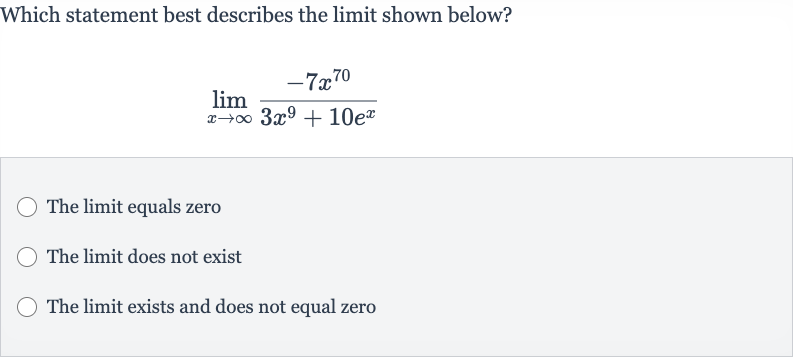Full solution
Q. Which statement best describes the limit shown below?The limit equals zeroThe limit does not existThe limit exists and does not equal zero
- Given Limit Expression: We are given the limit expression . To find the behavior of this limit as approaches infinity, we need to analyze the degrees of the polynomials in the numerator and the denominator, as well as the exponential function in the denominator.
- Degree Analysis: First, let's consider the highest power of in both the numerator and the denominator. In the numerator, the highest power of is , and in the denominator, the highest power of is . The exponential function grows faster than any polynomial, but we will first compare the polynomial terms.
- Dominant Term Comparison: Since the degree of in the numerator () is much higher than the degree of in the denominator (), the polynomial part of the fraction will dominate the behavior of the limit as approaches infinity. The exponential term becomes insignificant compared to the term as grows larger.
- Simplification by Division: As approaches infinity, the fraction will dominate the behavior of the limit. We can simplify this fraction by dividing both the numerator and the denominator by , the highest power of in the denominator.
- Exponential Term Behavior: After dividing by , we get . As approaches infinity, the term goes to zero because the exponential function grows slower than . Therefore, the denominator approaches .
- Final Simplified Expression: Now, we are left with the simplified expression . As approaches infinity, also approaches infinity, and thus the whole expression approaches negative infinity.
- Limit Evaluation: Since the expression approaches negative infinity, the limit does not equal , and it does exist. Therefore, the correct statement is "The limit exists and does not equal ."
More problems from Power rule
QuestionGet tutor help
QuestionGet tutor help
QuestionGet tutor help
QuestionGet tutor help
QuestionGet tutor help

